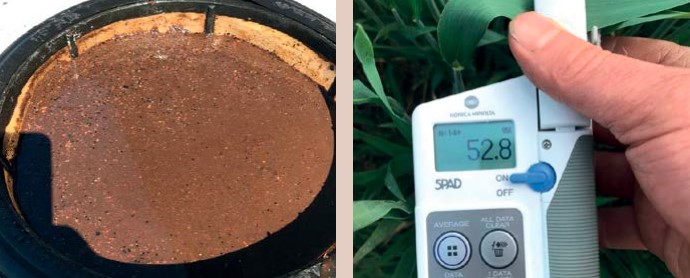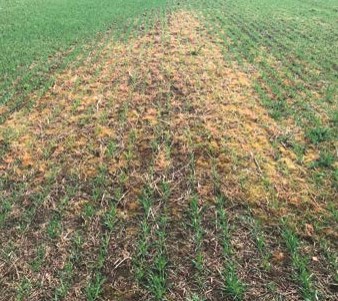
Well, what a roller coaster of a spring, coming out of yet another wet winter. Land here coped superbly, yet again giving me a real feeling of contentment seeing drains flowing with clear water, leaving my nutrients and soil where they should be.

Drilling was a dream this year with crops going in in ideal conditions, with the addition of brewed biology or compost extract. Extraction was a little bit time consuming to start with until I got into a routine (see from the picture). I have extracted the compost by first mixing a slurry in a bucket to release the available fungal spores and bacteria from the compost. This is then put into a top hat filter to take out any large debris. This is then emptied into the drill tank and applied using the peristaltic pumps with no filtration. There is still a lot of debris left in the mixture, which I put down in the seeding trench with the seed.
A filtered system tends to block and is the main reason I switched to peristaltic pumps in order to be able to handle the mixture. Time will tell if applying compost extract is needed on my soil or not (I will keep you posted). I try to farm using biology and nutrition to keep my carbon footprint low giving me more carbon to sell, as in my opinion we can all be sequestering a lot of carbon with cover crops etc, but if your footprint is still high you could easily be in a position of having very little to sell; something which we will all have to be aware of moving forward as I see carbon being a big income for us when subsidies disappear altogether.

Using the Bio-meter to monitor change ( I do not believe it to be 100% accurate like most monitors), I have been getting results of 1:6:1 fungi to bacteria, which shows what I am doing is working. I firmly believe replacing fungicides with biology has played a big part in my quest for a more fungal dominated soil. This also helps the plant’s immune system to work better in fighting off disease/pest attacks, but also gives it (the plant), the required nutrition to give the best achievable yield within the growing year. I do not class myself as a low input farmer; I class what I and other farmers are doing as intelligent farming, since we are making decisions to obtain the best yields but with a lower input cost, where I would still be prepared to pay for more expensive inputs if deemed necessary to obtain that high profit. So far, I have found that by keeping nutrition balanced and using biology to replace fungicides I can achieve the desired effect whilst still improving my soil. I feel we, as society, cannot keep destroying the planet in the name of food production, when we are proving it can be done while regenerating the planet.
This year working again with Mike and Nick from Edaphos, I am growing wheat with no soil applied nitrogen, along with Spring Barley and Oilseed Rape which have had 21kg/ha of soil applied nitrogen. These crops have then been monitored using a chlorophyll meter along with sap/tissue test, with Foliar applied nitrogen being used to make up short falls. This also allows me to keep the plant totally balanced through the growing season as a plant’s limitation is always its lowest deficiency in my opinion. At the time of writing this article I have not used any fungicides and hope to get through the season without them, as I have read many papers about the loss of aggregation within soil where they have been used. In addition, the breakdown of debris is faster in my experience due to the barrier of fungicides not being present.

A new addition to the farm is my Crimper roller made yet again from Trevor Tappin which should be on show at Groundswell. This I hope will allow me to push yet further away from herbicides in the years when I have no frosty nights (3am start) to be able to roll with a Cambridge roll to destroy the cover crops. I like to drill on the green where possible as well, but the one crop where I have always had problems (or yield reductions) is Spring Barley, where I like to destroy the cover crop at least three weeks before drilling. This year I left a little patch (GPS failed to engage on the sprayer) where I drilled on the green and sprayed post drilling. You can see from the picture the effects this has on the crop. So even though the sprayer had let me down there is always a positive to be found in every situation.

On the flip side of drilling on the green where I drilled spring beans on the green and had good cover, it was the only place on the farm where moisture could still be found on the farm during April. If we were to continue to have these dry Springs crimping would definitely be the way forward to retain moisture.
I wish everybody an enjoyable bumper Harvest